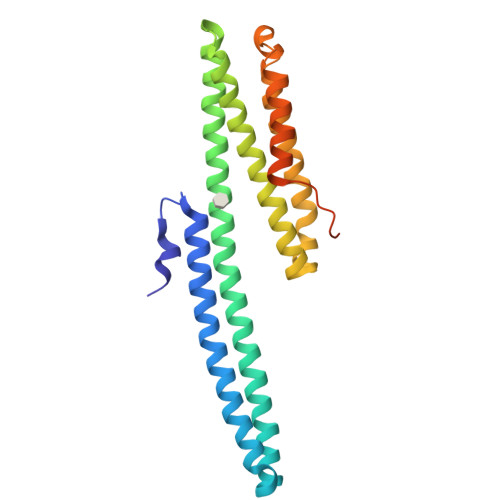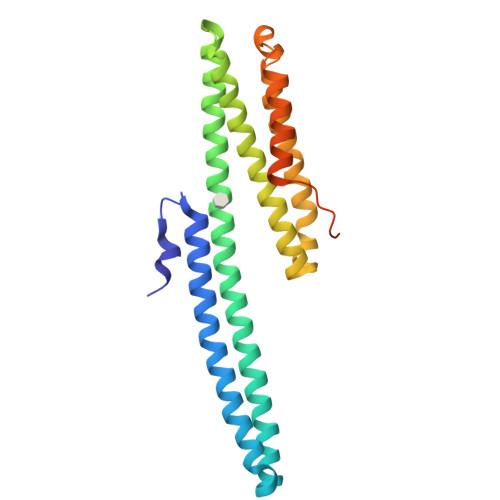Structural characterization of the E2 domain of APL-1, a Caenorhabditis elegans homolog of human amyloid precursor protein, and its heparin binding site
Hoopes, J.T., Liu, X., Xu, X., Demeler, B., Folta-Stogniew, E., Li, C., Ha, Y.(2010) J Biological Chem 285: 2165-2173
- PubMed: 19906646
- DOI: https://doi.org/10.1074/jbc.M109.018432
- Primary Citation of Related Structures:
3K66, 3K6B - PubMed Abstract:
The amyloid beta-peptide deposit found in the brain tissue of patients with Alzheimer disease is derived from a large heparin-binding protein precursor APP. The biological function of APP and its homologs is not precisely known. Here we report the x-ray structure of the E2 domain of APL-1, an APP homolog in Caenorhabditis elegans, and compare it to the human APP structure. We also describe the structure of APL-1 E2 in complex with sucrose octasulfate, a highly negatively charged disaccharide, which reveals an unexpected binding pocket between the two halves of E2. Based on the crystal structure, we are able to map, using site-directed mutagenesis, a surface groove on E2 to which heparin may bind. Our biochemical data also indicate that the affinity of E2 for heparin is influenced by pH: at pH 5, the binding appears to be much stronger than that at neutral pH. This property is likely caused by histidine residues in the vicinity of the mapped heparin binding site and could be important for the proposed adhesive function of APL-1.
Organizational Affiliation:
Department of Pharmacology, Yale School of Medicine, New Haven, CT 06520, USA.



















